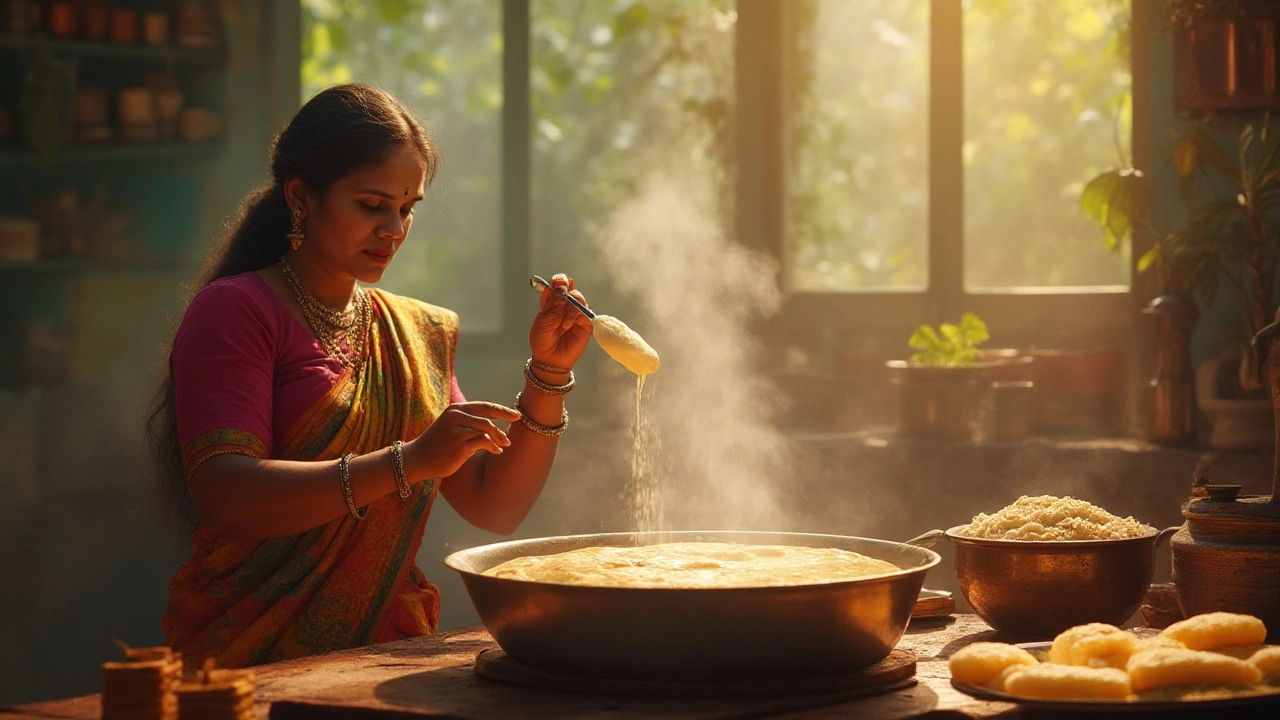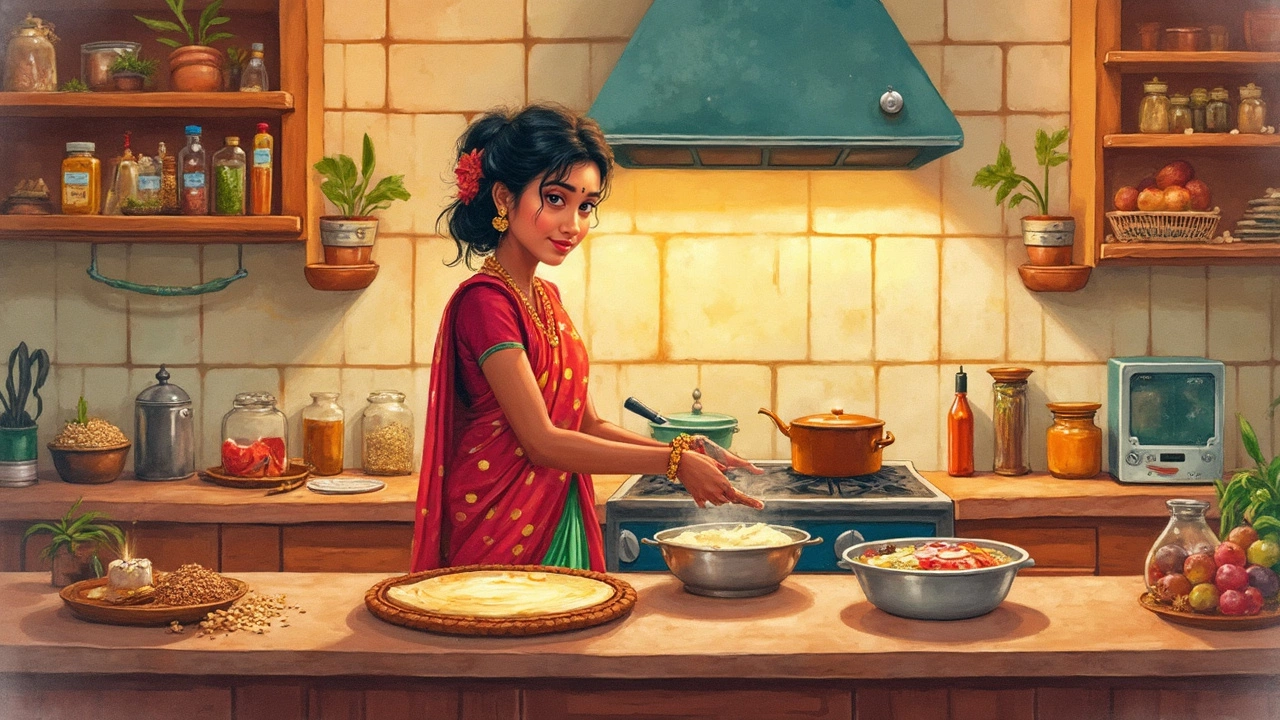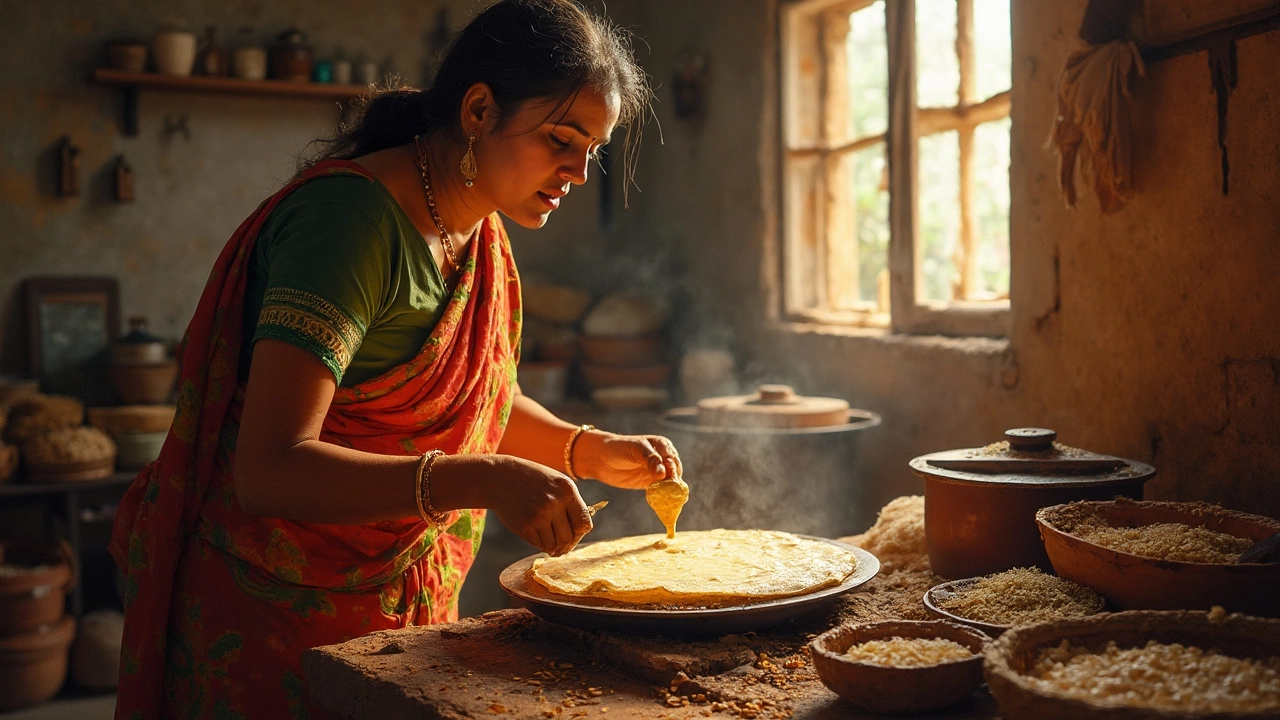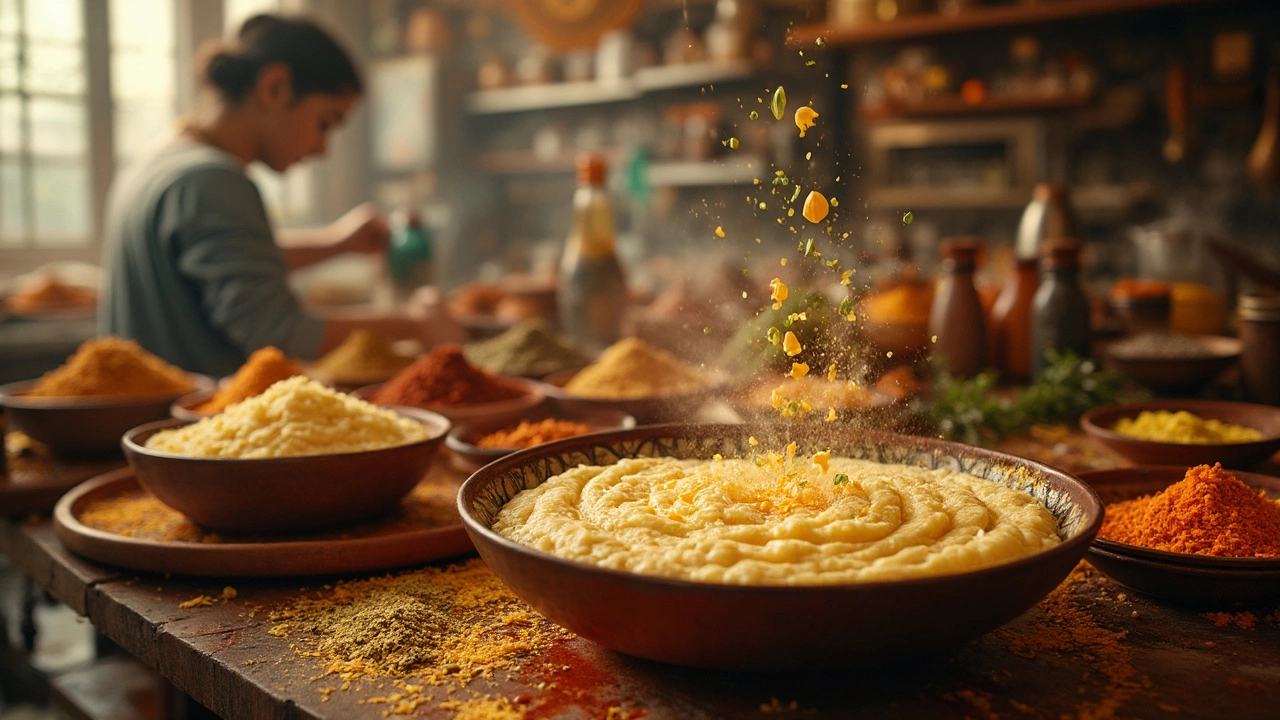Dosa Fermentation: Essential Tips for Perfect South Indian Crepes
When working with dosa fermentation, the process of letting a blended rice‑and‑urad dal batter develop natural sourness and bubbles before cooking. Also known as dosa batter souring, it transforms a simple pancake mix into the airy, tangy crepes loved across South Indian cuisine. Dosa batter is the base ingredient; its ratio of soaked rice to urad dal, the water level, and the fermentation time dictate the final texture. Adding a pinch of baking soda at the end can boost fluffiness by releasing carbon dioxide during the hot pan. In short, dosa fermentation encompasses batter preparation, requires a warm environment, and benefits from a small alkaline boost, creating the signature crisp‑yet‑soft sheets.
How to Set Up a Reliable Fermentation Cycle
The first step is soaking equal parts parboiled rice and split urad dal for at least four hours, then grinding them into a smooth paste with plenty of water. Aim for a batter consistency similar to thick pancake mix; too thick hampers yeast activity, too thin drains flavor. Once blended, let the batter rest in a clean bowl, covering it with a loose lid to allow air exchange. A temperature between 78°F and 85°F (25°C‑29°C) is ideal; you can achieve this inside a turned‑off oven with the light on, or by placing the bowl near a warm stove.
After 8‑12 hours you should see small bubbles forming on the surface and a pleasant sour aroma. If the batter looks flat, give it a gentle stir and extend the time; the natural lactobacilli need space to multiply. Some cooks add a tiny spoonful of previously fermented batter as a starter culture—think yogurt starter for a quick kick. When the batter reaches its peak, stir in the optional baking soda just before cooking; this short‑term alkaline reaction adds lift without altering the classic tang.
Troubleshooting is part of the fun. If the batter smells funky or turns pink, it’s likely contaminated and should be discarded. A watery batter can be thickened with a handful of roasted rice flour, while a too‑sour mix can be balanced with a splash of milk or a pinch of sugar. Remember, the goal is a balance between acidity (for flavor) and puffiness (for texture). Mastering these tweaks means you’ll never have a flat dosa again.
With the fundamentals covered, you’re ready to explore the articles below. They dive deeper into specific techniques, quick‑ferment hacks, and common mistakes, giving you a toolbox of actionable insights to perfect every dosa you make.

Why Do We Add Curd to Dosa Batter? Science, Tips, and Real Flavor
Ever wondered why curd goes into dosa batter? Hauntingly simple, the answer packs a punch. Get the science, tips, and real flavor secrets of dosa here.

Fast Dosa Batter Fermentation: Tips You Need to Try
Speeding up dosa batter fermentation can be a game-changer for quick home cooking. This article shows you quick techniques to get that crispy dosa in less time, like using warmth from your kitchen gadgets or adding grains for a boost. You'll discover how tweaking little steps can make a big difference.

Quickly Ferment Dosa Batter Without Yeast
Mastering the art of dosa involves perfecting the batter, especially without using yeast. This article delves into practical tips for fermenting dosa batter in record time, embracing natural methods without compromising taste. Discover the importance of temperature, ingredient proportions, and useful hacks to achieve a well-fermented batter for those crispy, golden dosas. Explore how a warm environment can speed up fermentation, making it efficient even in colder climates.

Quick Dosa Fermentation: Tips for Getting the Best Results
Speeding up the dosa fermentation process without sacrificing flavor can be quite the culinary challenge. This article explores practical tips such as using warm environments and adding secret ingredients like fenugreek. Discover time-saving techniques and understand the role of climate in perfecting your dosa batter. Get ready to revolutionize your kitchen game with these quick and effective strategies.

Quick Tips to Ferment Dosa Batter Effectively
Fermenting dosa batter can sometimes take longer than we'd like, especially with traditional methods. Discover several simple techniques to speed up the process without compromising taste or texture. Learn the role of ingredients like fenugreek seeds, the importance of temperature, and how batter consistency can impact fermentation time. With these practical tips, you'll have your dosa batter ready quicker than ever, ensuring delicious, crispy dosas every time.